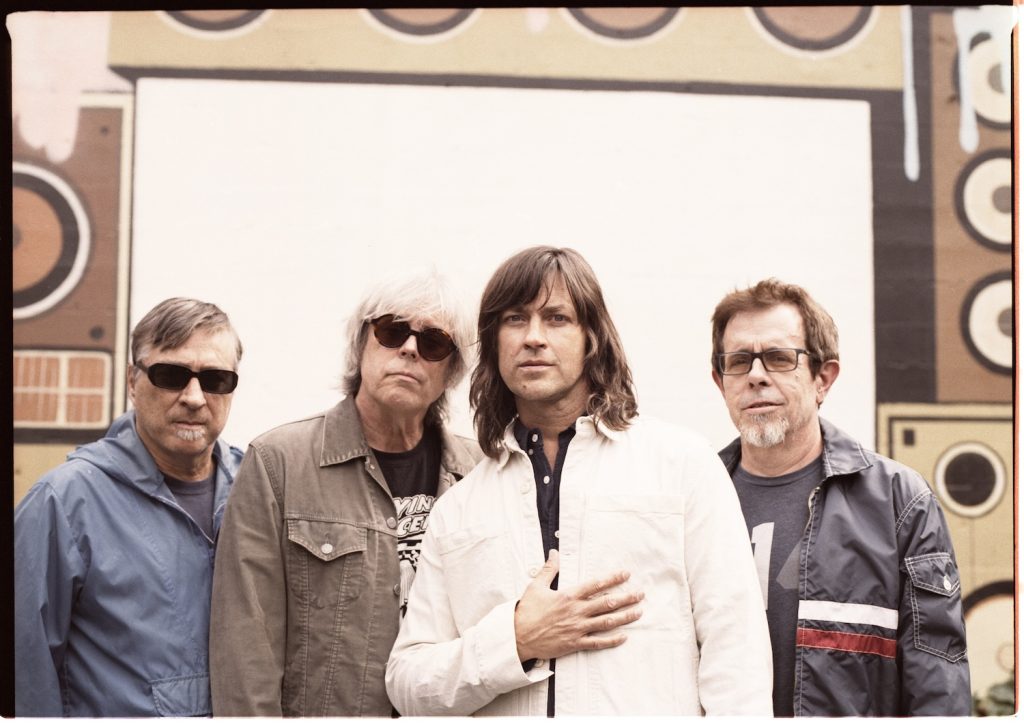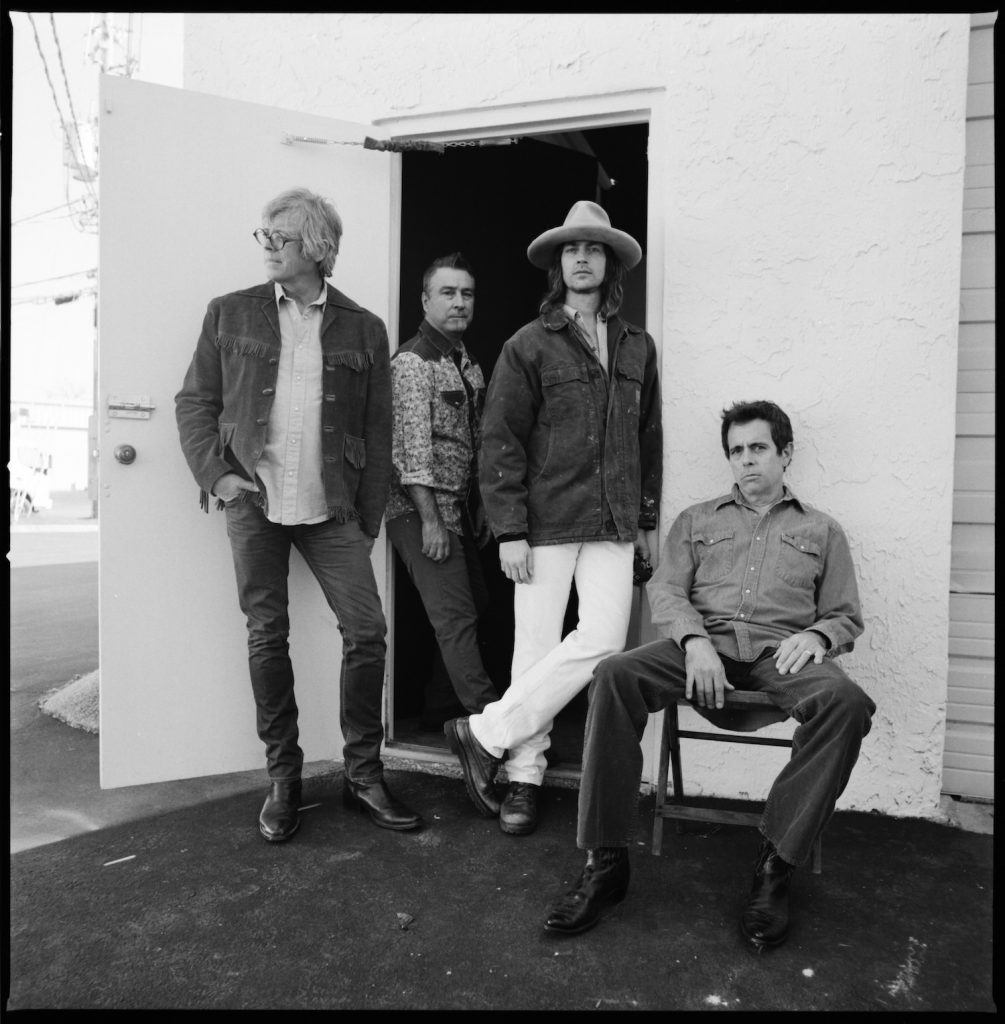[ad_1]

Previous 97’s mark the thirtieth anniversary of their 1994 debut, Hitchhike To Rhome, with a brand new album that finds them taking part in extra like a cohesive unit than ever. American Primitive (ATO) has a souped-up shuffle that harkens again to the group’s early years—minus the nervous vitality. Its title lifted from a little bit of fictional critique within the Stephen King novel Duma Key, the album was recorded rapidly and effectively at Portland, Ore.’s Flora Recording & Playback with little-to-no prep work. They discovered the proper producer in Tucker Martine (My Morning Jacket, Neko Case). Very similar to Wally Gagel did on the band’s 1997 album, Too Far To Care, Martine finds the candy spot, balancing a fats studio sound with the spontaneity of stay efficiency. The LP additionally options contributions from R.E.M.’s Peter Buck and Scott McCaughey (Younger Contemporary Fellows, Minus 5).
With virtually 50 exhibits on the agenda via September, Previous 97’s are spending April out West. They’ll take a brief break in June earlier than hitting the Midwest and East Coast this summer time. MAGNET checked in with Rhett Miller, Murry Hammond and Ken Bethea in Tucson, Ariz., a number of hours earlier than a present on the storied Lodge Congress.
This actually isn’t the identical band that recorded Hitchhike To Rhome, but it surely does really feel like you might be returning to your roots on American Primitive.
Rhett Miller: Some individuals have stated it seems like our first report or two. However, in plenty of methods, it’s nothing like that. We might by no means have achieved what we’re doing on this report again then. I didn’t know easy methods to sing like I used to be alleged to sing. Ken is 100 instances the guitar participant he was again then.
Ken Bethea: The massive track on the album, “The place The Highway Goes,” is totally one thing we wouldn’t have achieved then. It’s emotional, and it’s the one track the place we’ve ever had Philip (Peeples) make a drum loop. Rhett’s simply taking part in a straight strum via it and will get form of meditative.
Miller: It takes a stage of confidence to try this. It’s an announcement, for higher or worse. Even after I was writing it, I used to be like, “Oh my God, is that this an excessive amount of? Is that this tacky?” It’s actually an earnest track about gratitude. Ugh, horrible. But it surely wound up working.
What position did Tucker Martine play in shaping the report?
Miller: We have been working so rapidly that I don’t suppose we gave him a lot time to do something. However the environment he created—the positivity he embodied and his relaxed strategy to recording—actually made it straightforward to make this type of report. It was a quick, off-the-cuff recording. Actually, it’s a report of the place our band is now, 30 years in.
Murry Hammond: If it emulates the vitality and looseness of our early days, it’s purely unintentional, actually. It might be extra of a tribute to the manufacturing than us within the room. We do that on a regular basis. It’s only a query of whether or not you’ll be able to seize it.
Bethea: I believe it was 11 days we have been in there. It wasn’t lengthy. After we went to Portland, we hadn’t even rehearsed the songs, and we began monitoring from day one.
Miller: It was more durable for Ken as a result of he needed to give you iconic guitar components on the spot. I’d already written the songs and agonized over them.
The studio was a former bike membership. Did it have that biker vibe?
Hammond: No, however unhealthy stuff occurred within the basement.
Miller: It had a very creepy secret room down there. At one level, some man got here by and requested us if we knew the historical past behind the constructing. I don’t know if there are good biker golf equipment, however this was not a pleasant biker membership. When Tucker moved in, he needed to do all this hippie-dippy smudging to get the unhealthy juju out of it.



What was the method like for vetting songs on this report?
Bethea: A few yr and a half in the past, we have been doing a Midwest string of exhibits, and my greatest good friend drove Rhett and me to the gigs. Rhett had 40 frigging demos, and we listened to all of them and made feedback. It was slightly awkward as a result of …
Miller: I used to be sitting proper there.
Bethea: And never each track could be the perfect track. It was like, “You know the way I stated the final track was the perfect I’ve ever heard? Properly, it’s shit in comparison with this one.” [Laughs]
Miller: I’ve at all times made demoes and pushed round and listened to them. But it surely was nice to have the ability to do this with Ken and his greatest good friend, who’s identified us because the earliest days of the band. Day after day, we’d hearken to songs, and I’d make notes. That helped quite a bit, as a result of we didn’t get to do pre-production on this album.
What’s the story behind “Estuviera Cayendo,” the instrumental that ends the album?
Bethea: Jeff Trapp is an expert flamenco guitar participant. He’s additionally our merch vendor, and he’s been touring with us since 2003.
Miller: I had this concept for a musical reprise of (album opener) “Falling Down,” which has kind of Spanish really feel to it. I challenged Jeff to write down a flamenco model of it, and he actually dug into it and wrote a wonderful piece. We had fun the opposite day when Rolling Stone’s evaluation of the album got here out. They talked about me by identify, they usually talked about Jeff Trapp by identify, however they don’t point out anyone else by identify.
And there’s additionally an excellent story behind the quilt.
Hammond: That’s my boy, Tex. He’s been a semi-professional artist for a number of years now, and he’s 17.
Miller: He’s the youngest painter to be showcased on the LA Artwork Present.
Hammond: It was Ken’s concept for him to do a canopy of some type …
Miller: Hey, it was my concept! Or possibly it was each of us on the identical time.
Hammond: My directions to Tex have been, “Do no matter you need. Right here’s the title.” He got here up with this horse—he loves the Picasso horses. His mother, Gray, glued some brown paper to the canvas, and Tex painted over the paper.
It’s a near-miracle that, after 30 years, your unique lineup remains to be intact.
Miller: It’s helped that we every have our personal separate lives and are available collectively to do that. It’s plenty of determining that you just don’t need to win each struggle or let your ego push you into no matter battle is occurring that day.
Bethea: All of us love the Rolling Stones, they usually’ve been doing it for 60 years. However as Brian (Henneman) from the Bottle Rockets as soon as identified, it’s quite a bit simpler to try this in case you’re the Rolling Stones and never the Bottle Rockets. However there’s something to the truth that we’re not an enormous band.
Miller: I generally surprise what would’ve occurred if we’d had a giant ’90s hit. We’d be time-stamped and taking part in on a type of nostalgia excursions. As a result of we’re not time-stamped, individuals nonetheless reply to and request songs from the previous 5 or 10 years as a lot as they do the outdated stuff—and that’s fairly cool.
—Hobart Rowland
See Previous 97’s stay.
[ad_2]




